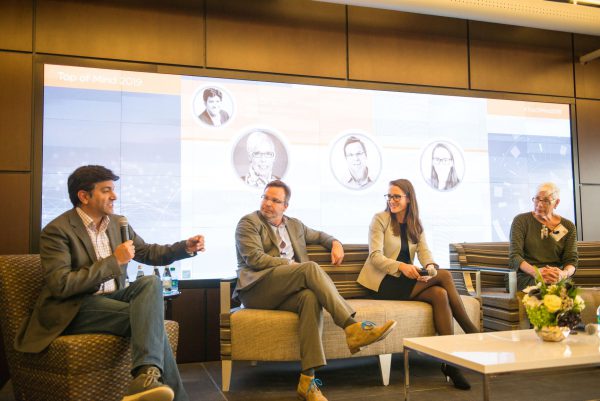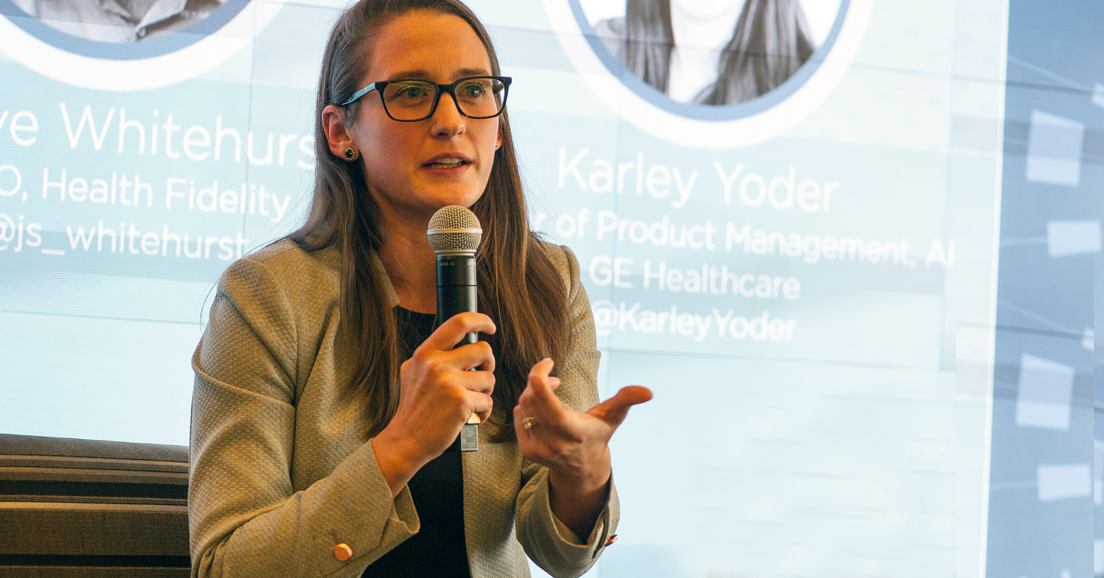Karley Yoder of GE Healthcare says health care still needs to be able to accurately measure workflows before building trusted and useful tools for predictive analytics
If health care’s use of predictive analytics to measure outcomes and align incentives were a baseball game, what inning would the industry be in?
According to Karley Yoder, the professional ballplayers haven’t even taken the field.
“I don’t think we’ve started the game in many ways. I don’t think we’re able to appropriately measure what happens in our workflow much less the outcome,” said Yoder, Director of Product Management, Artificial Intelligence, GE Healthcare.
Analytics and value-based care at Top of Mind 2019 Summit
Yoder was responding to a question from Aneesh Chopra, the first Chief Technology Officer of the United States and President of CareJourney, an open data service for better patient care.
Chopra was moderating a panel discussion at the Center for Connected Medicine’s Top of Mind 2019 Summit on analytics and value-based care. In addition to Yoder, the panel included:
- Pamela Peele, PhD, Chief Analytics Officer of UPMC Health Plan and UPMC Enterprises
- Steve Whitehurst, CEO of Health Fidelity

What is the target for predictive analytics tools in health care?
Chopra started his discussion with Yoder by asking her what she thinks the target for analytic tools in health care should be.
Yoder responded that there two pillars that are important for standing up analytics in health care: “Measuring outcomes and aligning incentives with those outcomes.”
Both are required, Yoder said.
“If you focus just on outcomes without aligning incentives across patient, provider, and payer, you have a utopia that doesn’t scale,” she said. “If you focus just on aligning incentives without the focus on outcomes, I can you guarantee you skipped over the incentive of the patient.”
‘What inning are we in?’
Chopra followed up his initial question by asking if the goal is being able to measure outcomes and align them with incentives, using a baseball analogy, “what inning are we in?”
Yoder drew laughter from the audience at the Top of Mind 2019 Summit by answering, “little league,” before moving on to explain that there’s much more work to do before health care is able to build analytic tools that are generalizable, unbiased, trusted, and adopted.
“You have to gather data from around the world, across different patient types, and test it in many different settings. We’re not doing that yet,” Yoder said.
“Second, even if you can solve that problem, if you don’t think about integrating it in a clinical workflow in a way that makes the clinician’s job easier, more efficient, then it almost doesn’t matter how good the analysis is,” she said.
“We haven’t even gotten the basics right to begin playing the game around analytics yet.”
See more videos from Top of Mind 2019
- ‘Acute pain’ at health systems driving investment in digital health solutions, startups
- Cybersecurity is the biggest priority and challenge for health systems, leaders say
- Health systems are the taxi industry in an Uber world
- Why health systems should work together to manage cloud cybersecurity risk
- Vivian Lee says Verily wants to help patients make health data more useful
- Pricing transparency will bring value to health care consumers, Don Rucker says
Download the Top of Mind 2019 research report
Read insights from C-suite executives at nearly 40 health systems covering three high-priority areas of health IT: Cybersecurity, Telehealth, and Interoperability.



